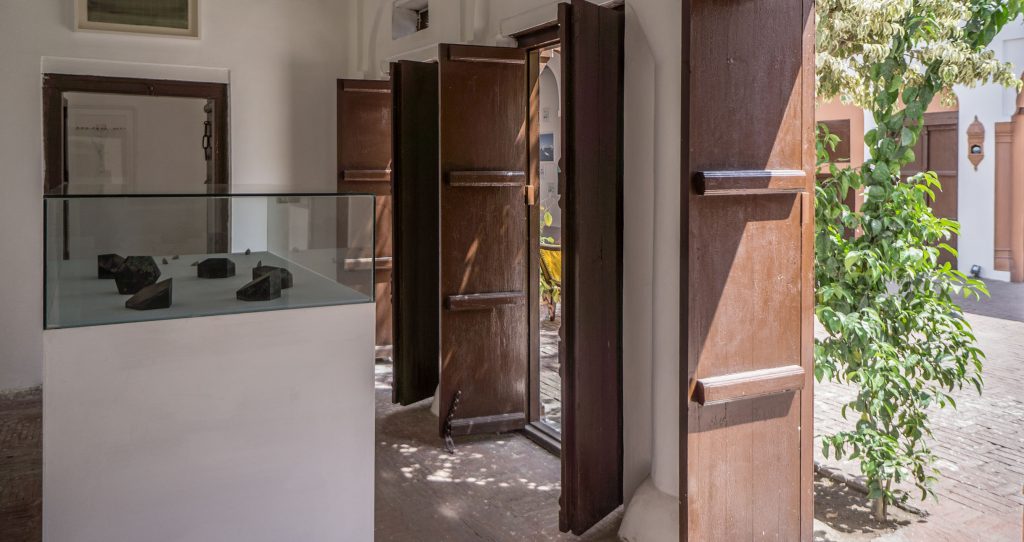Mubarak Haveli
Built in 1863 and later restored during the British era, the Mubarak Haveli is a historic building located inside Bhatti Gate in the Walled City area. The Mubarak Haveli is an important example of a courtyard mansion characteristic traditional domestic architecture. At present, the Mubarak Haveli compound also houses the Naqsh School of Art, which teaches arts and crafts. The Mubarak Haveli was a site for works selected by curator Mariah Lookman, whose theme foregrounded untranslatability, silence, and the inability to see everything. It suggested that a degree of opaqueness operates as a strategy of resistance against a straightforward reading of histories, cultures, and politics. The refusal to be addressed and interpellated marks the grouping of these works as acts of resilience, fortitude and critical self-examination during our postcolonial era characterized by social and political uncertainty. At the Mubarak Haveli, artist and activist Lala Rukh’s work evokes pools of darkness that evoke the ocean on a dark night with seemingly nothing to see. On the other hand Mirror Image, 2011 series links with earlier Mirror Image I & II 1997 made in response to the 1992 demolition of the Babri masjid (mosque) in India and retaliatory attacks on temples in Pakistan, also signal deteriorating politics. Zahoor ul Akhlaq’s drawing Study for Long March at Nawabpur, 1986 is an enigmatic work. At the same time, given that the long march is a form of protest against rule by the military in Pakistan, the Minotaur like creature that we see flogging a figure can be interpreted as the relationship between the oppressor and the oppressed. T. Shanaathanan’s Incomplete Thombu is record like chronicle of the memories and homes lost by the Tamil community during the civil war years 1983-2009 in Sri Lanka. Muhanned Cader continues to fragment the ocean view that in Lost Horizon 2018 uncannily conjures to the imagination ocean voyages with all its perils and histories of conquest by sea up to the present day migration crisis. Alia Syed looks back to the past differently and disintegrates 16mm film to speak of a particular time in the history of India to mourn a culture lost. And Aisha Khalid’s book making with an emphasis on materiality plays with viewer perceptions in ways that reveal the language-based class disparity in Pakistan, at once familiar and unfamiliar. Rasel Chowdhury’s photographic series point to the changing landscape of the artist’s home town and beyond. The photos are taken on a railway journey reminiscent of the artist’s childhood days where the only way to get from villages into towns was by rail. Finely controlled lines, shapes and forms in the drawings and sculpture of Ayesha Sultana are inspired by shifting architecture in Dhaka. The rising moon in Minam Apang’s drawings, or the destruction of Lahore recorded by Mahbub Shah are a result of finely observed processes. Ayesha Jatoi’s text inspired by a classical thumri on being at once both home and away and the mechanical yet organic sound piece by Asvajit Boyle awaken more by way of visual and auditory sensation than can be spoken. Annotation in the multiple scripts all the more make these works instantly foreign as well as recognizable. Even the underlying languages that shape perception and analysis of the artwork are numerous: Tamil, English, Bengali, Sindhi, Punjabi, Urdu, and Hindi, some mutually intelligible but none understood by all.

